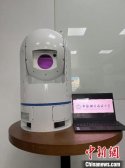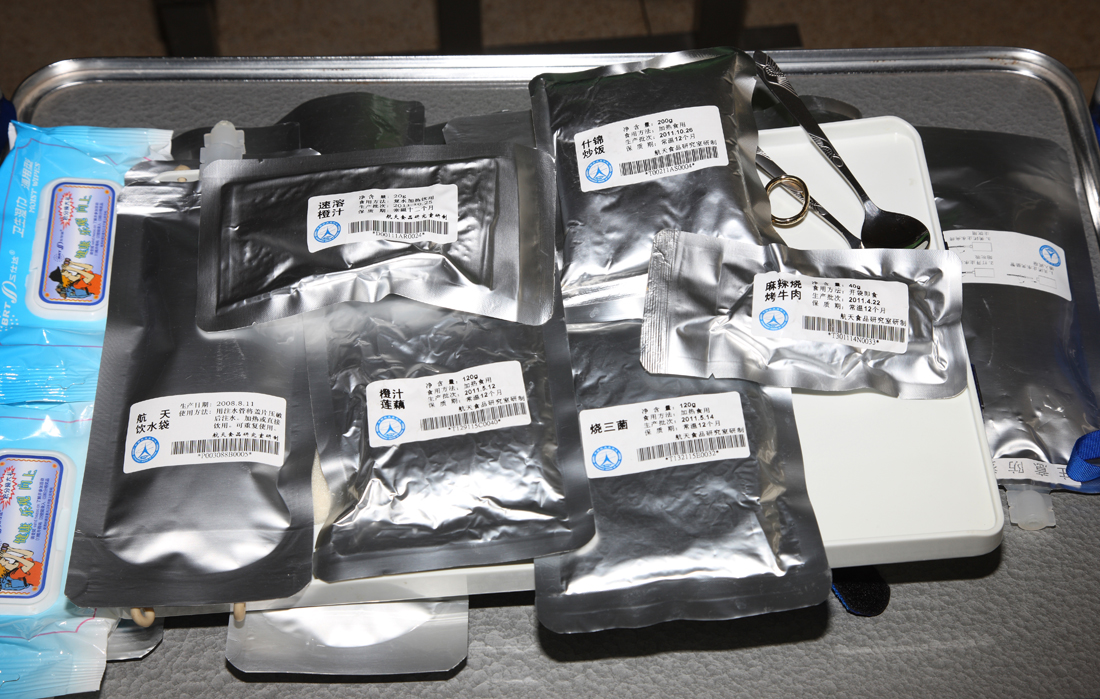Chinese taikonaut food has been expanding over the years, they are able to eat various types of dishes up there. I find it hard to believe they don't have systems and procedures in place to deal with smells.Air filtration is not enough. The smell comes from the small chemical particles. These particles not only fly in the air but stick to surfaces like plastic and into fabrics. Air can be filtered, but the surface is difficult to clean especially in zero gravity. Think about staying in a smoking room for a while, the clothes will smell, they have to be washed.
Anything that has a unique smell must be comfortably accepted by all crews to be allowed in the station. That means something is accepted by 90% of the general population. A person allergic to something common or having body odour is not qualified to be astronaut, neither a thing that is not commonly accepted by most people is qualified to be in the space.
You are using an out of date browser. It may not display this or other websites correctly.
You should upgrade or use an alternative browser.
You should upgrade or use an alternative browser.
China's Space Program News Thread
- Thread starter crazyinsane105
- Start date
- Status
- Not open for further replies.
Those food they are eating right now don't have special smell to 90% of Chinese population. Most people wouldn't even be aware of the smell of them.Chinese taikonaut food has been expanding over the years, they are able to eat various types of dishes up there. I find it hard to believe they don't have systems and procedures in place to deal with smells.
For example, at least 80% people in China eat pork. None of these people would even smell pork in their home or from their cloth. A Muslim would smell it. While I can smell the presence of goat meat, raw or cocked. It won't be pleasant for anyone locked up in a confined space for half year.
The issue is not about whether there is smell, there is always. It is the "unpleasant" smell. All smell stays, good or bad relatively speaking, people live with the good ones and try to get rid of the bad ones.
I don't see why it is hard to believe the lack of system. Floating water in the space station is dangerous and there is no specific system to catch the water balls flying everywhere once escaped.
Last edited:
China has started construction of its first commerical spacecraft launch site in Wenchang, Hainan.
It is expected to open for business in the first half year of 2024. The project is funded by the Hainan province government, CASC, CASIC, and China Satellite Network Group Co., Ltd.
It is expected to open for business in the first half year of 2024. The project is funded by the Hainan province government, CASC, CASIC, and China Satellite Network Group Co., Ltd.
海南文昌7月6日电 (记者 王子谦)海南商业航天发射场项目6日在海南文昌国际航天城举行开工仪式,这是中国首个开工建设的商业航天发射场。
文昌国际航天城是海南自贸港的重点园区,正在依托航天发射场,建设航天领域重大科技创新基地,打造空间科技创新战略高地。文昌市市长、文昌国际航天城管理局局长刘冲此前表示,文昌国际航天城争取2024年上半年实现常态化商业发射。
海南商业航天发射场项目由海南国际商业航天发射有限公司投建,该公司由海南省和中国航天科技集团、中国航天科工集团、中国卫星网络集团共同出资成立。
Oops. Wrong thread. Mod please move this post to the Science and Technology thread.
A team from USTC made a major breakthrough in making Coherent Doppler LiDAR for wind field measurement (相干测风激光雷达). At the space resolution of 3 meters and time resolution of 0.1 second, their system has the highest resolution among all the published results in the world. The measurement accuracy is 0.5m/s comparing to the calibration equipment in verifications.
The scientists tested the prototype device for 100 hours non-stop and autonomously to measure the wind field in wake vortices of HSR trains running at 350km/h. Thanks to its high resolution, the Kaman vortex street in the wind field detected by the device matches highly to the simulation result of aerodynamic computation (计算流体力学模拟结果).
The team worked out a set of optimal components, including the laser source, optical tx-rx system, high speed data sampling circuit and the data processing algorithms. They developed a new inversion algorithm (反演算法) that greatly improves the accuracy and robustness of wind field inversion (风场反演). The final result is a complete indigenous prototype ready for production.

The prototype device weighs about 40kg and uses the laser at the wave length of 1550.1nm which is safe to human eyes.
A team from USTC made a major breakthrough in making Coherent Doppler LiDAR for wind field measurement (相干测风激光雷达). At the space resolution of 3 meters and time resolution of 0.1 second, their system has the highest resolution among all the published results in the world. The measurement accuracy is 0.5m/s comparing to the calibration equipment in verifications.
The scientists tested the prototype device for 100 hours non-stop and autonomously to measure the wind field in wake vortices of HSR trains running at 350km/h. Thanks to its high resolution, the Kaman vortex street in the wind field detected by the device matches highly to the simulation result of aerodynamic computation (计算流体力学模拟结果).
The team worked out a set of optimal components, including the laser source, optical tx-rx system, high speed data sampling circuit and the data processing algorithms. They developed a new inversion algorithm (反演算法) that greatly improves the accuracy and robustness of wind field inversion (风场反演). The final result is a complete indigenous prototype ready for production.

The prototype device weighs about 40kg and uses the laser at the wave length of 1550.1nm which is safe to human eyes.
合肥7月5日电 (记者 吴兰)记者5日从中国科学技术大学获悉,该校地球和空间科学学院教授薛向辉团队在相干测风激光雷达系统研制方面取得重大突破,首次实现空间分辨率3米、时间分辨率0.1秒的风场探测。
据悉,这是迄今为止有报道的全球最高精度的风场连续探测。相关成果发表在国际知名光学期刊《光学快报》。
为了实现“看得远、看得细,测得快、测得准”的高时空分辨测风激光雷达,团队通过在激光光源、光学收发系统、高速数据采集电路和数据处理算法上对激光雷达进行全面优化,并在时频分析、脉冲编码基础上提出一种新的反演算法,大大提高了风场反演精度和稳健性,最终实现了一套全国产化的“产品级”测试样机。
据介绍,雷达样机工作波长为1550.1纳米,具有人眼安全、设备轻便(整装设备40公斤)、工作稳定、环境适应性强等特点。
通过外场对比试验,该雷达样机风场观测结果与定标设备对比误差小于0.5米每秒。
为进一步测试雷达观测性能和环境适应性,团队在安徽省宿州市高铁站实地测量了高速列车尾流中的风场结构。雷达在无人值守下连续稳定工作超过100小时,获得了3米和0.1秒高时空分辨率下的350公里每小时的高铁尾流连续观测,并首次利用激光雷达捕捉到高铁尾流中类似于冯卡门涡街的风场结构,与计算流体力学模拟结果高度一致。
If this is mounted on a satellite it could possibly detect the disturbance that aircraft make in the air.Oops. Wrong thread. Mod please move this post to the Science and Technology thread.
A team from USTC made a major breakthrough in making Coherent Doppler LiDAR for wind field measurement (相干测风激光雷达). At the space resolution of 3 meters and time resolution of 0.1 second, their system has the highest resolution among all the published results in the world. The measurement accuracy is 0.5m/s comparing to the calibration equipment in verifications.
The scientists tested the prototype device for 100 hours non-stop and autonomously to measure the wind field in wake vortices of HSR trains running at 350km/h. Thanks to its high resolution, the Kaman vortex street in the wind field detected by the device matches highly to the simulation result of aerodynamic computation (计算流体力学模拟结果).
The team worked out a set of optimal components, including the laser source, optical tx-rx system, high speed data sampling circuit and the data processing algorithms. They developed a new inversion algorithm (反演算法) that greatly improves the accuracy and robustness of wind field inversion (风场反演). The final result is a complete indigenous prototype ready for production.
View attachment 92321
The prototype device weighs about 40kg and uses the laser at the wave length of 1550.1nm which is safe to human eyes.
Nobody is going to punish you for asking a question.I wonder if we can submit a question to CNSA and get an answer from the source of whether luosifen (or any other strong foods like durian and stinky tofu) are acceptable meals to send to the space station.
CNSA isn't exactly your average public transportation agency, and from the reporting to now the food seems to be chosen via surveys done by prospective crew. If there is demand for it they can likely accomodate, it isn't quite the same as fresh homemade cooking, they can process and package in a way to prevent or mitigate smells from escaping the pouches they eat out of. There is no problem with Sichuan cuisine abroad the station after all.Nobody is going to punish you for asking a question.But I wonder if you know that durian (any smelly thing including stinky tofu) is not even allowed to be brought aboard passenger aircraft nor passenger train (air sealed HSR as far as I know), why would CNSA allow it in the space station?

Do they not eat other types of noodles up there? I'd figure it'd be the same more or less.
Not sure how practical it would be to handle any soup-based food items up there. I reckon cold noodles are probably fine.Do these instant luo shi fen have that unique, and frankly, quite distinguishable smell of the original ? If so is there a way to get ride of the smell in space ? I had the same question when I first saw the toilets on ISS as well many years back
So unless they can settle for sucking the noodles from a pouch or a tube, and risk choking from it, it'd most likely be off the menu.
I believe they have Yuxiang Pork and Kung Pao Chicken on the menu, which do have pretty strong 'aromas'. While I'm sure to any Chinese those dishes would be far from unpleasant, the smells do linger for a long time... at least in my case whenever I have them to go from my local Chinese joint, from the moment I open up the container to long after I've finished I would still smell it in the house... Not quite the scent I would necessarily choose to fragrance my room haha.Those food they are eating right now don't have special smell to 90% of Chinese population. Most people wouldn't even be aware of the smell of them.
For example, at least 80% people in China eat pork. None of these people would even smell pork in their home or from their cloth. A Muslim would smell it. While I can smell the presence of goat meat, raw or cocked. It won't be pleasant for anyone locked up in a confined space for half year.
The issue is not about whether there is smell, there is always. It is the "unpleasant" smell. All smell stays, good or bad relatively speaking, people live with the good ones and try to get rid of the bad ones.
I don't see why it is hard to believe the lack of system. Floating water in the space station is dangerous and there is no specific system to catch the water balls flying everywhere once escaped.The only effective procedure is not doing it (except during event like intentional space class). In the same manner the effective procedure of keeping smell away is not eating specific food. It isn't a food that majority of Chinese eat anyway.
- Status
- Not open for further replies.
